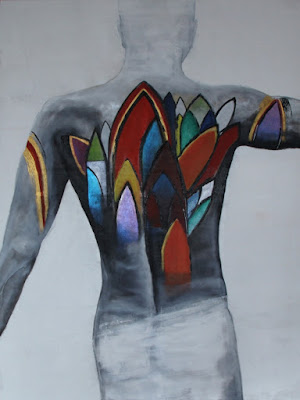Kendrit I
"Kendrit" means "Focused". It is often thought that the goal of meditation is to empty the mind. However It's not about "emptying" the mind; it's about focusing on a single focal point or object that could be physical or mental. When the mind wanders,harnessing it and refocusing is achieved through meditation.When total focus of the mind upon a single object is achieved, the mind is totally absorbed in the object to the exclusion of all distractions.
We all occasionally experience this state spontaneously when for instance listening to a favourite piece of music or being engrossed in the arts. This focus is the key to a change in experiencing life and relating to others around us. The practice of Kendrit has no age bar and hence this is depicted in the series where the monks are obviously across the age spectrum from the novice child monk to the experienced ageing monk.
Acrylic on canvas (48 x 24)
Acquired




.jpg)






.jpg)


